1989 IROC Z Used 5.7L V8 16V Automatic RWD
- Location: Local pick-up only
- Condition: Used
- Make: Chevrolet
- Model: Camaro
- SubModel: 2 Dr Hatchback
- Trim: IROC Z
- Doors: 2 Doors
- Year: 1989
- Mileage: 114677
- VIN: 1G1FP218XKL148298
- Color: Black
- Engine size: 5.7L V8 16V
- Number of cylinders: 8
- Fuel: Gasoline
- Transmission: Automatic
- Drive type: RWD
- Interior color: Red
- Vehicle Title: Clear
1989 Chevrolet Camaro IROC Z Description
Please visit
www.ClassicsBeyond.com
to view all the pictures of this vehicle.
History of the 1989 Iroc Z
The 1989 model year signified the return of the RS designation (last used in 1987 on a limited edition California only model). The Rally Sport was now the base model featuring body ground effects mimicking the IROC and the previous Z28 but with the 2.8 V6 fuel-injected motor as standard with the 305 as an option. The raised rear spoiler that became available in 1988 on the base coupes was short-lived and done away with for this year. The engine ratings carried over from '88 with the addition of IROC-Z Coupes had a new dual catalytic converter exhaust option N10 that was standard with the G92 option only available on the 305 TPI motor with a manual transmission and the 350 TPI only available with the TH700-R4 automatic. 1989 was also the last year any third-gen with the B2L RPO 350 TPI L98 engine could be ordered in combination with the CC1 RPO removable T-Top roof panels.
Power ratings also varied in the 305 from 170hp (standard RPO L03) to 230hp (RPO LB9 with manual transmission and RPO N10 dual catalytic converter exhaust) and a boost to 240hp for the 350 with RPO N10 respectively.
IROC-Zs with the TPI 350 had the 2.77 rear axle ratio as in the previous year, but the optional RPO G92 Performance Axle package modified the ratio to 3.27 for the TPI 350, and 3.45 for the TPI 305 with manual transmission. RPO G92 also included the aforementioned dual-converter exhaust; 4-wheel disc brakes (RPO J65); engine oil cooler; P245/50ZR16 Goodyear Eagle unidirectional tires; a 145mph (233km/h) speedometer; and a tachometer with a 5,500rpm redline. A total of 1,426 IROC-Z coupes were equipped with the Performance Axle package in 1989.
To take an IROC-Z coupe to the maximum performance extreme in 1989, when G92 Performance Axle was ordered with no air conditioning (C41), RPO code 1LE was automatically triggered. This included extra equipment intended to make the IROC-Z more competitive in SCCA Showroom Stock road racing events: larger 11.65-inch (296mm) rotors with 2-piston aluminium calipers from PBR; an aluminum driveshaft; a special baffled fuel tank; specific shock absorbers; and stiffer suspension bushings. The fog lamps were also deleted. The 1LE was simply an option combination, not a separate package or model that dealers were aware of the existence of, resulting in 111 cars built with 1LE equipment in 1989.[13]
 1989 Chevrolet Camaro IROC Z/28 Coupe 1989 IROC Z/28 Used 5.7L V8 16V Automatic
1989 Chevrolet Camaro IROC Z/28 Coupe 1989 IROC Z/28 Used 5.7L V8 16V Automatic
Mileage: 77770
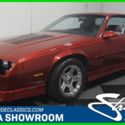 1989 IROC Z/28 Used 5.7L V8 16V Automatic RWD
1989 IROC Z/28 Used 5.7L V8 16V Automatic RWD
Mileage: 77,770
 1989 IROC Z/28 5.7L V8 16V Automatic RWD
1989 IROC Z/28 5.7L V8 16V Automatic RWD
Mileage: 77,770
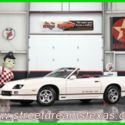 1989 IROC Z 2dr Convertible Used 5L V8 16V Automatic RWD Premium
1989 IROC Z 2dr Convertible Used 5L V8 16V Automatic RWD Premium
Mileage: 32,830
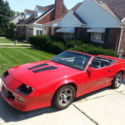 1989 Chevrolet Camaro Iroc-Z Convertible 2-Door 5.0L IROC Z TUNED PORT INJECTION
1989 Chevrolet Camaro Iroc-Z Convertible 2-Door 5.0L IROC Z TUNED PORT INJECTION
Mileage: 118,000
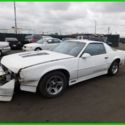 1989 Chevrolet Camaro IROC Z Used 5.7L V8 16V Automatic NO RESERVE
1989 Chevrolet Camaro IROC Z Used 5.7L V8 16V Automatic NO RESERVE
Mileage: 34,608
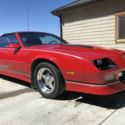 1989 Chevrolet Camaro IROC Z Convertible Red RWD Automatic
1989 Chevrolet Camaro IROC Z Convertible Red RWD Automatic
Mileage: 84182
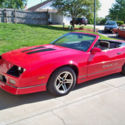 1989 Chevrolet Camaro Iroc Z convertible. 305 engine, automatic
1989 Chevrolet Camaro Iroc Z convertible. 305 engine, automatic
Mileage: 999,999







 1989 IROC Z 2dr Convertible Used 5L V8 16V Automatic RWD
1989 IROC Z 2dr Convertible Used 5L V8 16V Automatic RWD
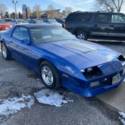 1989 Chevrolet Camaro IROC Z 0 Blue Coupe 8 Automatic
1989 Chevrolet Camaro IROC Z 0 Blue Coupe 8 Automatic